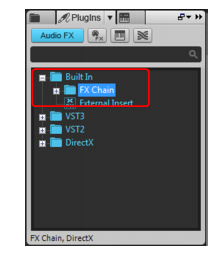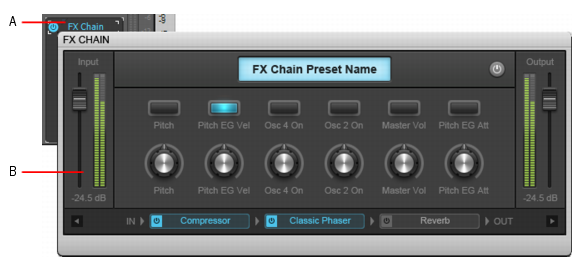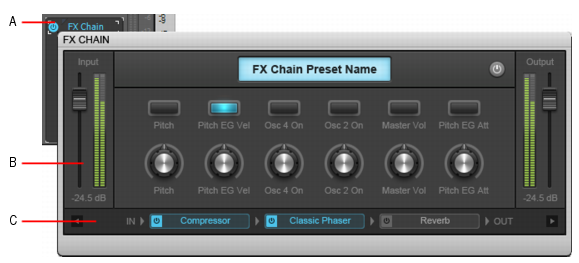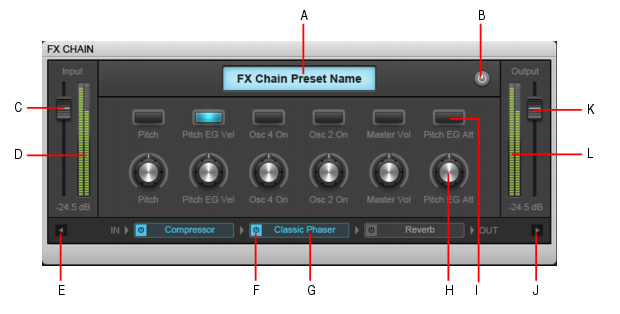SONAR LE Documentation is based on the full version of SONAR. Some screenshots, folder paths, features and other references may differ from your installation.FX Chain presets can be used in track, clip and bus effects bins. One or many FX Chain containers can reside in a single effects bin, but you can not nest an FX Chain container inside other FX Chain containers.A. FX Chain container in effects bin B. FX Chain property page














in the Browser, then drag the FX Chain container from the Track view to the Audio FX section in the Browser. The FX Chain is added to the FX Chain folder.



Tip - Searching Documentation
Tip: To search for a specific topic, type your search query in the Search Cakewalk.com field at the top right of this page.
When the search results appear, click which product's documentation you would like to search to filter the search results further.
Note - Using Offline Help
Note: If you prefer to always use offline Help, go to Edit > Preferences > File > Advanced in your Cakewalk software and select Always Use Offline Help.
If you are not connected to the internet, your Cakewalk software will default to showing offline help until an internet connection becomes available.







